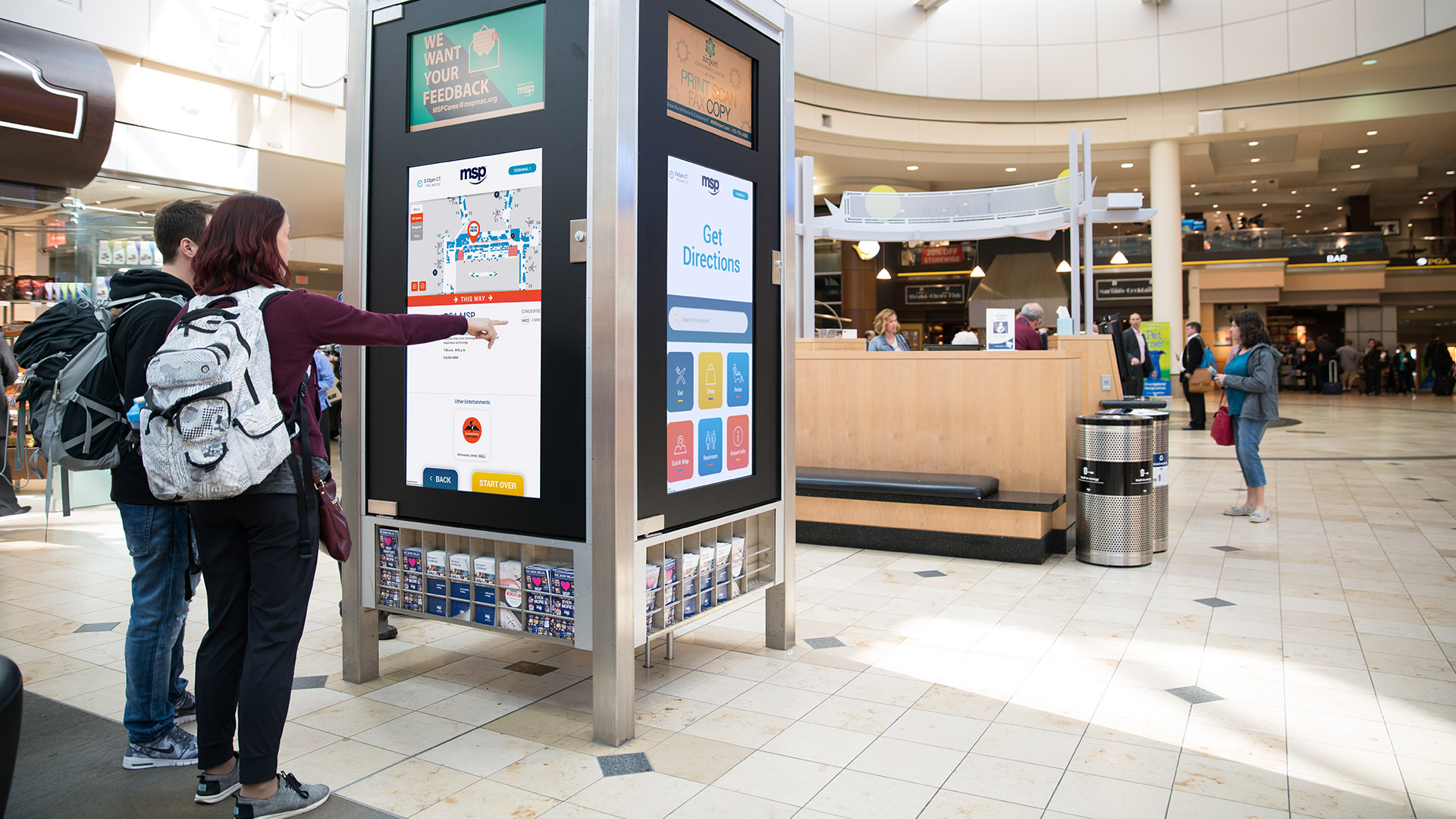Every place you look, paper signage is being taken down and replaced with shiny screens. There’s a long list of benefits of the way wayfinding systems in retail are making the modern shopper experience better. It makes a store more convenient to navigate, less confusing, and as a consequence, more successful. Let’s explore the ways in which wayfinding makes the modern shopper experience better:
Wayfinding offers familiarity
Research finds that familiarity and habit drive in-store relationships. We might believe that a store’s uniformity violates the individuality modern shoppers pine for, yet there is a reason why these stores use identical experiences, and why places like McDonalds, Target, and Walmart are so successful. Interesting research, led by University of Virginia behavioral scientists, discovered that so much of our lives are subject to change, where we move to, live, etc. that familiarity and habit combats the anxiety faced during times of mobility.
For stores to balance that need for personalization with familiarity, digital wayfinding will help. For instance, using directory apps that show where every department is inside a store assists in providing a sense of familiarity. Also, it permits steady messaging to be carried all throughout the store. The same directories, layouts, and brand colors of each area or level, ensures familiarity throughout.
Wayfinding in self-service stores
A lot of customers enjoy the self-serve feature in stores. In many modern coffee shops, retail centers, and grocery stores, some consumers are plugged into headphones, physically there but mentally in their own world. Efficient in-store digital wayfinding signs help them to independently navigate. Also, it means shoppers do not have to hunt down staff members to ask something simplistic such as where the shoe department is located. It adds to the sense of “self-serve” stores, which mimics the online shopping experience in which “add to cart” comes without interacting with anything but the items in the cart.
Full canvas in wayfinding
Digital wayfinding usually is an excellent method of pulling all aspects of your brand into a single viewable screen. Signs hold together the online identity, store identity, brand values and the brand’s personality. When so many shoppers are able to choose to shop, or research online before going into a physical store, it keeps their journey consistent.
Digital signage is a portal to navigating the store itself, figuring out where each experience and department is, as well as creating a viewpoint of things that are available outside the physical store such as online events, member’s clubs, and up and coming products which are not yet available. All of which, may be served on screen, in conjunction with more practical details like safety notices and wayfinding.
Digital wayfinding maps offers better merchandising
With digital floor plans, it’s possible to view everything on a single screen. With digital wayfinding you easily can play around with areas, layouts, and names of different sections. It assists you in rapidly getting a feel for the whole store experience, which, in turn, will streamline how you’ll present this to consumers later on down the line.
Wayfinding also is an ambassador for a store, particularly in bigger retail establishments such as shopping malls, in which wayfinding maps make a critical first impression on potential shoppers. The more engaging and easier the technology makes the visitor experience, the more sales and customers stores will likely see. Planning a physical area may be difficult yet using signs as a part of a larger store design quickly can assist in flagging any layout issues.
More staff opportunities
When you see any online inbound marketing structure, there are four segments of the customer journey. Just like it’s possible to see in the Hubspot diagram below, it goes from attracting strangers, all the way through to closing the sale. Then it’s possible to add the 4th element, the “delight” component.

In retail, a lot of the emphasis is placed on the initial three areas. But the fourth, “delight” component is what will lead to folks actually recommending your retail store. Research shows that recommendations from friends is the number one most credible type of advertising for shoppers. Because after all, we always recall that one example of exceptional service we obtained from someone who was working in a store.
The problem is, the majority of store staff are overworked and seldom have the time to serve basic consumer inquiries, not to mention going the extra mile. That’s where digital signs help. So much employee time is spent directing customers, answering questions, and attempting to get sales through a checkpoint. Once that aspect is taken care of by digital signs, employees get to do the additional 10 percent – the delight component which keeps shoppers satisfied and returning for more.
In a retail setting, wayfinding offers a simplistic interface which allows shoppers to interactively find a store and easily navigate to it. Even within daytime hours in well-lit malls/stores, the bright and bold face of wayfinding maps serve as beacons for lost visitors.

Leave a Reply